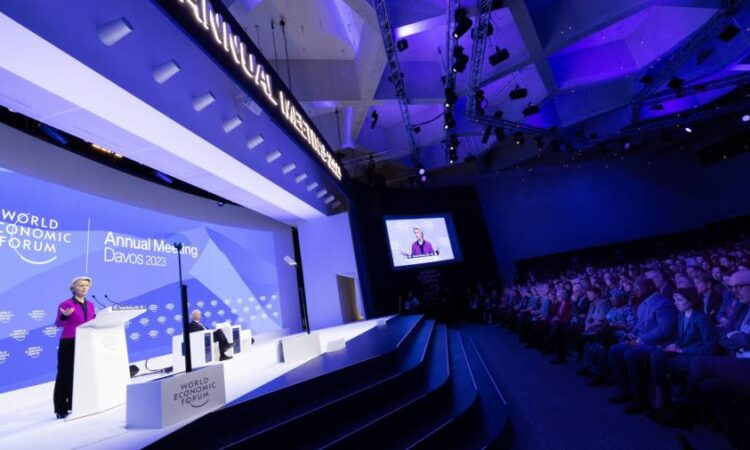
De-risk, don’t decouple, from the Chinese economy — this was the economic philosophy for the EU articulated by European Commission president Ursula von der Leyen at Davos last month. As organising principles go, it’s not a bad one, certainly better than Brussels’ nebulous “strategic autonomy” or the US’s disingenuous “worker-centred trade policy”.
The EU has for years been attempting to attain and hold a middle ground. On the one side is the official US predilection for using its federal powers to decouple its economy from China’s. (It should be noted that it’s unclear how far this will work: overall US-China goods trade probably hit an all-time record last year.) On the other is the EU’s history of mainly letting commerce with China flow. But despite EU member states increasingly turning against Beijing, Brussels is struggling to construct tools to reduce a perceived dangerous reliance on Chinese trade.
Europe’s ability to use policy is particularly weak in sensitive technologies with military and security applications. The EU has its own collective mechanisms for designing export controls. When there’s an obvious threat, the EU can act swiftly, with unity and in co-ordination with Washington: the two trading powers rapidly imposed a broad range of export controls on Russia after the invasion of Ukraine, from semiconductors to submarine engines.
But when a policy is more contentious and particularly affects one member state, EU processes are generally pushed aside in favour of national competence. The details of the reported US-Netherlands-Japan agreement further restricting the sales of chips and chipmaking kit to China remain to be seen. But it was the Dutch, with their comparative lack of economic and diplomatic heft, in the negotiating room with the US, not the EU collectively. The process was confidential and ad hoc, exactly the kind of environment in which Washington is particularly able to throw its weight about.
Sensitive technologies are an obvious weakness for collective EU action, but so is the lack of a strategy on de-risking China trade more generally. Europe would like security of supply, and where feasible a domestic industry, in sectors it considers of strategic importance, particularly green goods. That may be a wise idea or not, but in any case the EU is a long way from achieving it.
One obvious example is that Europe, not helped by complacent sluggishness in its own car industry, is lagging well behind China (and increasingly the US) in electric vehicles. The EU is currently poring over its underpowered and scattered subsidy toolkit to see if it can hope to match American spending in this area, let alone China’s — a subject to which I will return next week.
In the meantime, in line with the EU’s habit of relying on rules (of which it has plenty) rather than cash (of which it has relatively little), the bloc’s most enthusiastic China de-riskers (France in particular) have high hopes of the EU’s new foreign subsidies regulation. After years of debate, the new instrument comes into force in July. It enables the Commission to prevent state-subsidised companies from China or elsewhere producing in Europe or bidding for public procurement contracts there, essentially extending the EU’s tough state aid constraints to foreign governments.
The question, though, is how much and how well it gets used. After all, the EU has long had the ability to use trade defence instruments (TDI) to impose anti-subsidy and antidumping duties on imports it deems unfairly cheap. But it has not employed those instruments to their full extent, certainly not enough to constitute a determined industrial policy in green or other high-tech goods.
A decade ago, in the face of opposition from member states, the Commission was forced to back down from its plan to impose hefty across-the-board antidumping and anti-subsidy duties on imports of solar cells from China, in effect ceding control of the EU solar market to Chinese companies.
Peering through the opacity of the hugely complex Chinese subsidy regime to come up with an estimate of competition-distorting handouts that might survive challenge at the World Trade Organization, which the EU quaintly seems still to care about, is not an easy task.
The anti-foreign subsidy tool, along with traditional TDI, is unlikely to achieve a carefully calibrated degree of distance between the EU and Chinese economies. It also risks being used too broadly, reflecting domestic lobbying rather than a well-judged strategy of competitiveness.
De-risking rather than an all-or-nothing approach to decoupling from China is a good way of framing the issue. But the EU isn’t currently very well set up to do it. Brussels and the member states need to work hard to acquire and use precision-focused tools if they are to turn the slogan into more than elegant rhetoric.






